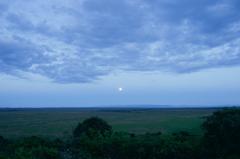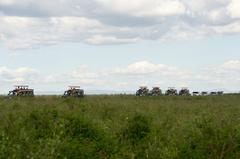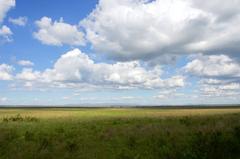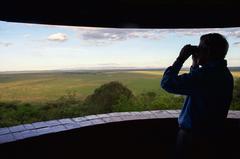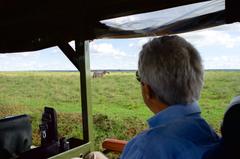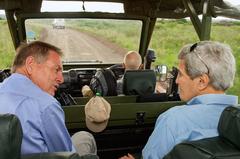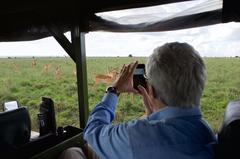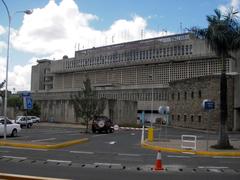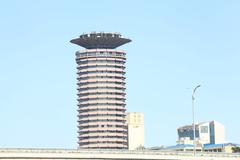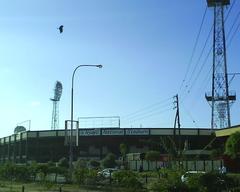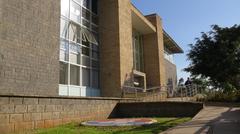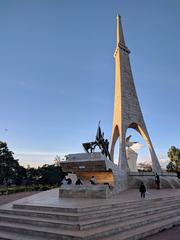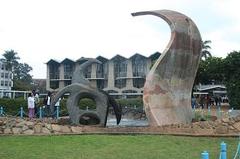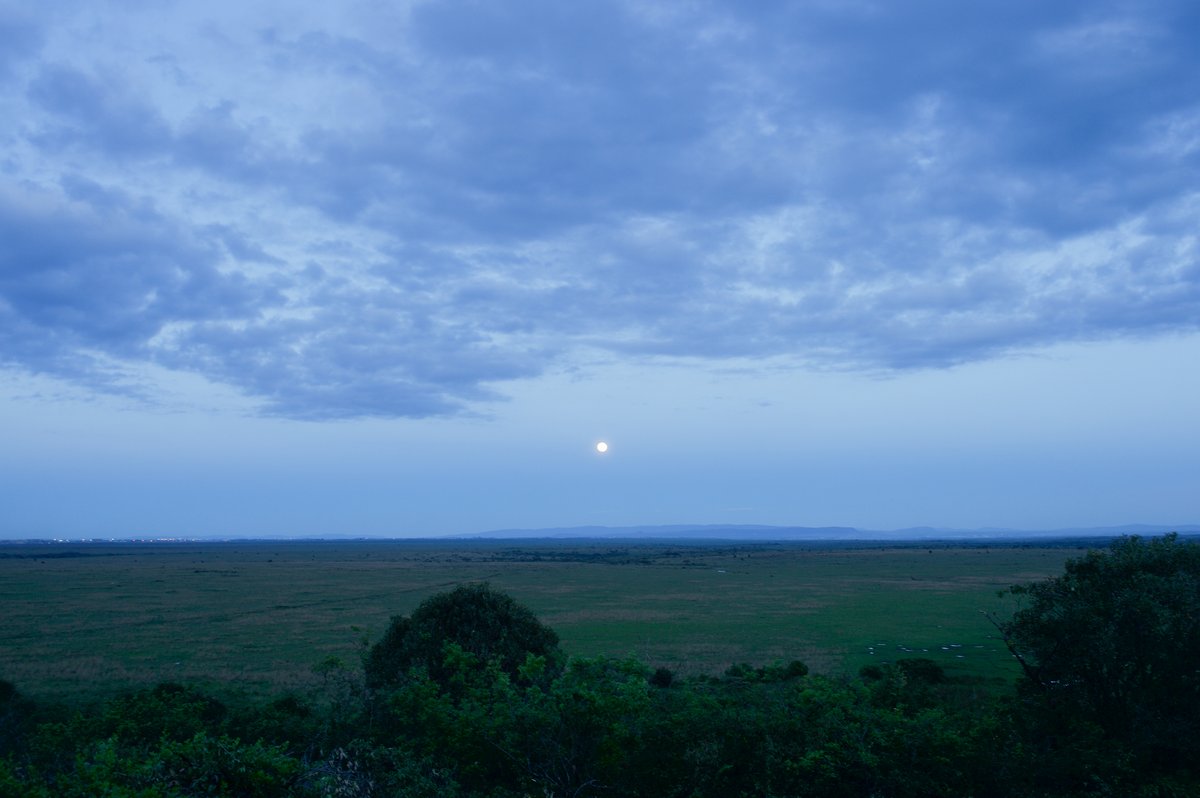
Nairobi National Park Visiting Hours, Tickets, and Tourist Guide
Date: 14/06/2025
Introduction to Nairobi National Park: History and Significance
Nairobi National Park is an exceptional wildlife reserve located just 7 kilometers from the center of Kenya’s capital. Established in 1946 as Kenya’s first national park, it stands as a global symbol of conservation—offering an extraordinary juxtaposition of urban skyline and open savannah. Its founding responded to increased human-wildlife conflict as Nairobi expanded, leading to the protection of the Athi plains. Today, the park preserves over 100 mammal species, including four of the iconic “Big Five” (excluding elephants), as well as more than 400 bird species. Cultural landmarks such as the Ivory Burning Site Monument—commemorating Kenya’s anti-poaching leadership—add depth to its appeal. As the only national park bordering a capital city, Nairobi National Park presents both unique conservation challenges and opportunities, making it a must-visit for tourists and locals alike (National Parks Association; Kenya Wildlife Service; Ole Sereni’s Ultimate Guide).
Table of Contents
- Introduction
- History and Cultural Significance
- Conservation Milestones and Global Significance
- Visiting Hours and Ticketing
- Accessibility and Travel Tips
- Park Layout and Access Points
- Habitats and Wildlife Diversity
- Game Drives, Guided Tours, and Special Activities
- Key Attractions Within and Near the Park
- Facilities and Visitor Services
- Safety and Regulations
- Responsible Tourism and Park Management
- Challenges and Future Directions
- Frequently Asked Questions (FAQs)
- Conclusion and Visitor Recommendations
- References
History and Cultural Significance
Colonial Origins and Early Development
Nairobi National Park’s history dates to the late 19th and early 20th centuries, when British colonialists settled the area. At the time, the Athi plains supported abundant wildlife living alongside Maasai pastoralists and Kikuyu farmers (Wikipedia). With Nairobi’s rapid growth, conflicts between people and wildlife became frequent, prompting the creation of the Southern Game Reserve. In 1946, this reserve was gazetted as Nairobi National Park, the first of its kind in Kenya (National Parks Association; Discover Walks). The park’s establishment came with the displacement of local Maasai communities, highlighting the complex intersection of conservation and social justice (Wikipedia).
Urban Encroachment and Human-Wildlife Conflict
Uniquely bordering Nairobi’s urban edge, the park faces constant pressure from the city’s expansion, pollution, and habitat fragmentation (Britannica). While fenced on three sides, its southern boundary remains open for wildlife migration—a crucial corridor for seasonal movement but also a source of ongoing human-wildlife conflict, especially as agriculture and settlements expand (Wikipedia).
Conservation Milestones and Global Significance
Nairobi National Park has achieved significant conservation successes:
- Black Rhino Sanctuary: The park is a leading stronghold for the critically endangered black rhinoceros (National Parks Association).
- Ivory Burning Site Monument: In 1989 and again in 2016, Kenyan presidents publicly burned confiscated ivory here, sending a powerful anti-poaching message worldwide (Kenya Peaks; Discover Walks).
- Lion Conservation Unit: Recognized in 2005 for its role in carnivore conservation (Wikipedia).
- Wildlife Rehabilitation: Home to the Nairobi Animal Orphanage and David Sheldrick Elephant Orphanage, both central to Kenya’s wildlife rescue and education efforts (Britannica; Nairobi National Park Kenya).
Visiting Hours and Ticketing
Visiting Hours
- Open daily: 6:00 AM to 7:00 PM
- Best times: Early morning and late afternoon for optimal wildlife sightings (Kenya Luxury Safari)
Ticket Prices
Ticket costs vary by residency and age:
- Non-resident adult: USD 43–100 (check KWS official site for current rates)
- Non-resident child: USD 22
- Kenyan citizens: KES 430 (adults), KES 215 (children)
- Vehicle entry: KES 300 (cars with fewer than 6 seats); higher rates for larger vehicles (Kenya Peaks)
- Special activities: Night game drive (KES 2,155/person), guided tours (KES 1,720–3,015/guide), camping/picnic fees as applicable
Payment: Cashless only (credit/debit cards, M-Pesa). Purchase tickets online via the KWS eCitizen portal (Roadtrip Africa; Nairobi Wire).
Accessibility and Travel Tips
- Location: 7 km south of Nairobi CBD; accessible via Lang’ata Road or Nairobi-Mombasa Highway (The Brutally Honest Traveler)
- Transport: Private vehicles, taxis, or organized tours are recommended. Limited public transport (matatus, city buses); train station nearby.
- Wheelchair Accessibility: Facilities at the main gate, Nairobi Safari Walk, and visitor center are wheelchair accessible.
- Packing: Bring binoculars, sunscreen, insect repellent, layers, and reusable water bottles.
- Best visiting months: Dry seasons (June–October, January–February) for highest wildlife concentrations. June sees lush post-rain landscapes with fewer crowds (Lonely Planet).
Park Layout and Access Points
- Size: 117–118 square kilometers (45 square miles), elevation 1,533–1,760 meters
- Fencing: North, east, and west boundaries fenced; southern boundary open for migration (Frontiers in Ecology and Evolution)
- Gates: Main Gate (Lang’ata Road), East Gate, Cheetah, Athi River, Masai, and Rogai Gates
- Facilities: Gravel game drive roads, picnic sites (Ivory Burning Site, Kingfisher, Impala, Mokoyiet, Hippo Pools), Nairobi Tented Camp, walking trails, Wildlife Education Centre, and Animal Orphanage
Habitats and Wildlife Diversity
- Grasslands/Savannah: Host large herbivores and predators (lions, cheetahs, buffalo, giraffes, zebras, antelopes)
- Woodlands/Forests: Shelter for giraffes, elands, and nesting birds
- Wetlands/Riverine: Hippos, crocodiles, and waterbirds along the Mbagathi River
- Other: Rocky outcrops and shrublands home to smaller mammals and reptiles
Wildlife Highlights:
- Over 100 mammal species, including black and white rhinos (notably Rothschild’s giraffes), lions, leopards, hyenas, and jackals
- 400+ bird species, including raptors, secretary birds, crowned cranes, and waterbirds
- Reptiles such as Nile crocodiles and various snakes
Game Drives, Guided Tours, and Special Activities
- Game Drives: Early morning/late afternoon best; self-drive (4x4 preferred) or guided tours by licensed operators (Ole Sereni; 10 Traveling Feet)
- Guided Walking Safaris: Rangers lead walks on designated trails, especially popular at Hippo Pools (Ole Sereni)
- Photography Safaris: Led by professional wildlife photographers (Ole Sereni)
- Night Game Drives: Occasionally available by prior arrangement (Ole Sereni)
- Picnic Sites: Kingfisher, Impala, and others provide scenic settings (store food securely) (The Brutally Honest Traveler)
Key Attractions Within and Near the Park
- Nairobi Animal Orphanage: Rehabilitation center for injured/orphaned wildlife (Ole Sereni)
- David Sheldrick Elephant Orphanage: Renowned for elephant rescue and rehabilitation; advance booking required (The Brutally Honest Traveler)
- Black Rhino Sanctuary: Protected area for critically endangered rhinos (Ole Sereni)
- Ivory Burning Site Monument: Symbol of Kenya’s anti-poaching efforts (Ole Sereni)
- Nearby: Nairobi Safari Walk, Karen Blixen Museum, Giraffe Centre, Nairobi National Museum, Kazuri Beads, Bomas of Kenya
Facilities and Visitor Services
- Restrooms: Available at main gates and picnic sites (carry your own toilet paper) (The Brutally Honest Traveler)
- Picnic Areas: Tables and benches provided
- Shops/Restaurants: Not available inside park—bring food and water
- Accommodation: Nairobi Tented Camp (inside), hotels/lodges nearby (Ole Sereni, Emakoko, Ololo Safari Lodge)
Safety and Regulations
- Remain in vehicles except at designated spots
- Do not feed or approach wildlife
- Keep noise to a minimum
- No littering; carry out all waste
- Supervise children at all times
- Follow ranger/guide instructions
Responsible Tourism and Park Management
Ecological Integrity and Conservation
- KWS employs zoning, restoration, and anti-poaching patrols
- Open southern boundary supports seasonal wildlife migration and genetic diversity
- Technology (drones, AI cameras) enhances surveillance and monitoring (Frontiers in Ecology and Evolution)
Visitor Management and Community Engagement
- Activities: Game drives, walks, birdwatching, picnics in designated areas
- Park rules: No off-roading, loud noises, or single-use plastics
- Community benefit: Local employment, cultural experiences, and revenue sharing
Sustainable Practices
- Eco-lodges use renewable energy and waste management systems
- Shared/electric safari vehicles reduce emissions
- Education: Visitor center, Safari Walk, school programs
Challenges and Future Directions
Despite its successes, Nairobi National Park faces:
- Urban encroachment threatening wildlife corridors
- Climate change impacting habitats
- Poaching and pollution requiring ongoing vigilance
- Visitor pressure during peak seasons
Adaptive management strategies include land-use planning, promotion of off-peak visits, and increased community partnerships.
Frequently Asked Questions (FAQs)
Q: What are Nairobi National Park’s visiting hours?
A: Daily, 6:00 AM to 7:00 PM
Q: How much are tickets?
A: Non-resident adults: USD 43–100; Kenyan adults: KES 430; Children and students: discounted rates
Q: How do I buy tickets?
A: Online via KWS eCitizen portal or at park gates (cashless only)
Q: Is the park accessible for disabled visitors?
A: Yes, main facilities and the Nairobi Safari Walk are accessible
Q: Can I self-drive?
A: Yes, 4x4 vehicle recommended
Q: Are night game drives available?
A: Yes, by advance arrangement with select operators
Conclusion and Visitor Recommendations
Nairobi National Park stands as a beacon of conservation within an urban setting, offering exceptional wildlife viewing, educational experiences, and cultural enrichment just minutes from the city center. Its accessible visiting hours, clear ticketing system, and variety of safari options make it suitable for all travelers. By following responsible tourism practices and supporting community initiatives, visitors help ensure the park’s continued vitality. For up-to-date information, always check the Kenya Wildlife Service official website.
Plan your visit today—download the Audiala app for seamless ticketing, guided tours, and insider tips. Stay connected for updates and exclusive offers to maximize your Nairobi National Park adventure!
References
- Nairobi National Park: Visiting Hours, Tickets, Historical Sites, and Conservation Highlights (2024) (National Parks Association)
- Nairobi National Park Guide: Visiting Hours, Tickets, Wildlife, and Attractions (2025) (Kenya Wildlife Service)
- Nairobi National Park Visitor Guide: Visiting Hours, Tickets, Wildlife Experiences, and More (2024) (Ole Sereni’s Ultimate Guide)
- Nairobi National Park Visiting Hours, Tickets, and Responsible Tourism Tips (2025) (Nairobi Wire)
- Nairobi National Park Wikipedia (2024) (Wikipedia)
- Britannica: Nairobi National Park (2025) (Britannica)
- Kenya Peaks: Nairobi National Park Ivory Burning Site Monument (2024) (Kenya Peaks)
- Discover Walks: Top 10 Facts About Nairobi National Park (2024) (Discover Walks)
- The Brutally Honest Traveler: 2024 Guide to Visiting Nairobi National Park (2024) (The Brutally Honest Traveler)
- Kenya Luxury Safari: Nairobi National Park Entrance Fees (2025) (Kenya Luxury Safari)
- Roadtrip Africa: Nairobi National Park Practical Info (2024) (Roadtrip Africa)
- Lonely Planet: Nairobi in June (2024) (Lonely Planet)
- Frontiers in Ecology and Evolution: Nairobi National Park Research (2025) (Frontiers in Ecology and Evolution)
